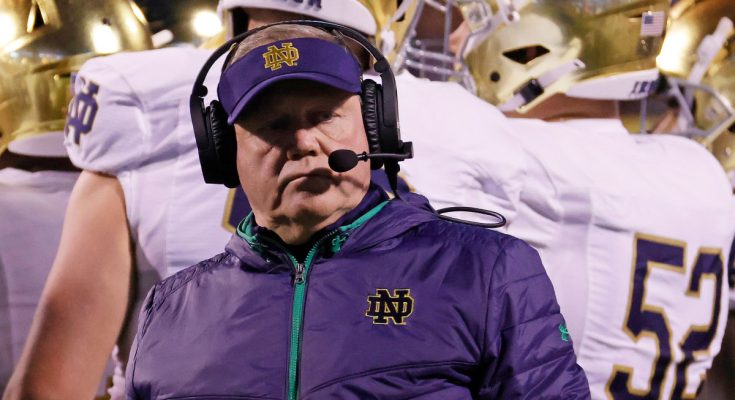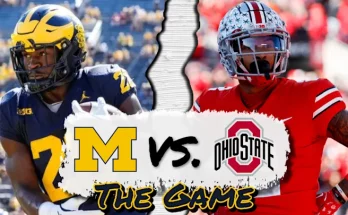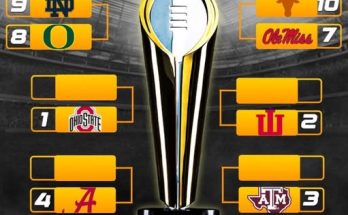When talk of injuries hits an elite collegiate football program, the reverberations are immediate: speculation runs rife, media attention intensifies, and a coach’s words become a focal point for reassurance or concern. Such was the scene at LSU in early August 2025, when rumors began circulating that starting quarterback Garrett Nussmeier, coming off a breakout season, had suffered a potentially serious knee injury during fall camp. The stir was enough to prompt head coach Brian Kelly to step forward—unprompted—to set the record straight. His response was equal parts clarity and humor, and it underscored essential truths about sports communication, injury management, and leadership under pressure.
First, let’s look at the factual diagnosis: Nussmeier did indeed suffer a minor issue during recent practice, but it was diagnosed as patellar tendinitis—a form of tendon inflammation around the kneecap—rather than any catastrophic structural damage such as a torn ACL. Kelly was clear in dismissing any notion of a torn ligament, noting explicitly, “he does not have a torn ACL,” and even quipped facetiously, “we have not amputated his leg.
To convey the low severity, Kelly invoked a relatable, nearly whimsical scale: “On the scale of 1 to 10, this is like a 1.5.” That analogy—marked by levity yet also by clear intent to reassure—helped defuse tensions while grounding the injury in realistic terms. Kelly emphasized that the issue was pre-existing and flare-up in nature, not new or structural: “It’s not torn, there’s no fraying… This is pre-existing… He aggravated it a little bit… He was out there today throwing.”
What stands out is the combination of factual debunking and coach-like confidence. By branding the injury as tendinitis rather than a ligament tear, Kelly sought to quell speculation. By humorously dismissing worst-case scenarios, he disarmed anxiety and reinforced the message: Nussmeier is fine, the quarterback room isn’t set back, and the Tigers’ preparations for the season remain on track.
Digging deeper, it’s worth exploring why such care in communication matters so much in modern collegiate football.
1. Quarterback health and season momentum
While every position on the field is critical, the quarterback carries outsized importance—especially in today’s offense-driven game—and even more so at LSU, a program that has produced recent Heisman winners and NFL stars. Garrett Nussmeier, now in his fifth year and entering his second season as the starter, is coming off a 2024 campaign where he threw for 4,052 yards and 29 touchdowns, while leading the SEC in passing attempts, completions, and—as Murphy’s Law would have it—interceptions. That statistical profile reflects both his central role in the offense and the pressure he shoulders. Any hint of injury to him not only raises concerns for short-term performance but also for LSU’s overarching goals: SEC success and a possible College Football Playoff appearance.
2. The power of transparency
Kelly’s direct approach—acknowledging the issue, quantifying it, and doing so with candor—epitomizes the transparency he has advocated for within college sports. At SEC media days earlier, he spoke of the need for integrity, consistency, and moral leadership amid the rising complexities of issues like NIL. In that light, his handling of the Nussmeier injury echoes those values: by offering timely, factual information, he often counters online misinformation before it takes hold.
3. Managing narratives in the digital age
Rumors and speculation travel fast. In the absence of clear facts, social media and fan forums can amplify fears—sometimes to absurd extremes. Media outlets reported widely on assumptions of a torn ligament; even the notion of season-ending injury began trending. That is precisely why Kelly’s preemptive press address was so effective: “I thought we’d calm everybody down.” He neutralized online hyperbole with facts, a measured tone, and just enough levity to dispel panic.
4. Medical context and injury management
Patellar tendinitis, colloquially known as “jumper’s knee,” is an overuse injury affecting the tendon connecting the kneecap to the shinbone. It’s common in athletes whose sports involve jumping or quick directional changes—like quarterbacks and receivers. While painful, it is typically non-structural and can be managed with rest, modified practice, physiotherapy, and gradual return to full activity. Kelly’s comments suggest just that: Nussmeier could throw as early as that day, and full practice was expected soon. By classifying the issue as a flare-up of a known condition, Kelly signaled that the injury was part of ongoing athlete management rather than a sudden breakdown.
5. Backup readiness and team morale
Even when a starter is healthy, managing the situation with openness helps the rest of the team stay focused. For backup quarterbacks, staff, and position groups, clarity ensures everyone stays mentally aligned. If the starter were truly at risk, the staff and backups would need to prepare. But if rumors run wild, that preparation is influenced by fear; Kelly’s clarity forestalled such distortions.
Kelly even added context related to surgery from the past: one report noted that the issue might trace back to a surgery in 2023 that predated the flare-up. With that medical history in mind, it makes even more sense—it aligns with how tendinitis, especially as a pre-existing condition, can recur with minor incidents.
6. Leadership lessons for all sports contexts
Though this scenario revolves around college football, its lessons resonate across athletics:
-
Address injury rumors promptly and transparently.
-
Use clear, relatable analogies (e.g., Kelly’s 1.5/10 scale) to translate medical severity for a general audience.
-
Maintain a bit of humor when appropriate—it humanizes and diffuses tension.
-
Provide both immediate status (e.g., “he was out there today throwing”) and short-term expectations (“tomorrow, back in practice”) to give timeline clarity.
-
Frame issues medically: differentiate between inflammation or overuse injuries and structural damage.
7. Implications for the season and fan expectations
With LSU scheduled to open the 2025 season against Clemson—then defending ACC champions—on August 30, any hint of a quarterback downgrade would affect both team confidence and public perception. Kelly’s reassuring clarity likely restored confidence in the team’s readiness, and by extension calmed fan anxiety and media overreaction.
To that point, Reuters reported that Kelly rated the severity “1.5 out of 10,” and stressed that there was “nothing to really see on film… He aggravated it a little bit, but he’s good to go.” Sports Illustrated captured the essence too, highlighting Kelly’s humor and the positive tone: “Things are good enough in Baton Rouge that Kelly is making jokes”—and quoting the coach’s “we have not amputated his leg” line. Even the New York Post flagged how Kelly “dispels online rumors” and again noted the minor nature of the injury and the coach’s comedic relief. These media signals reinforce how Kelly’s approach was well-timed and high impact.
8. The broader arc of Nussmeier’s career
An informed article gains depth when placed in context. Garrett Nussmeier’s journey at LSU reflects patience, progression, and rising expectation. He redshirted in 2021 after limited appearances, eventually stepping into a role off the bench behind future NFL drafts pick Jayden Daniels. His breakout came in January 2024, earning MVP of the ReliaQuest Bowl with 395 passing yards and three touchdowns after Daniels opted to prep for the draft. By the 2024 season, he was firmly entrenched as the starter and delivered those 4,052 yards, 29 TDs, and 12 interceptions across 13 starts. Now in his fifth year, expectations are sky-high, and fans—and possibly NFL scouts—are watching closely.
9. A coach’s responsibility beyond Xs and Os
It’s worth pausing on the broader role Brian Kelly is embracing. At SEC media days, he remarked that coaches must be stewards of integrity, emphasizing transparency and moral leadership in college sports amid evolving NIL realities. His handling of this injury rumor fits that ethos: rather than allow chaos to flourish, he stepped forward with facts, humility, and accountability. That posture suggests that Kelly sees coaching not merely as strategizing plays or training athletes, but shaping culture and protecting institutional trust.
In sum, what unfolded in Baton Rouge in early August 2025 was more than a minor injury update—it was a masterclass in communication from Brian Kelly. Garrett Nussmeier’s patellar tendinitis was diagnosed quickly and clearly, proposals of a serious knee injury were firmly dispelled, and the audience—players, fans, media—was given a gauge of severity via the memorable “1.5 out of 10” scale and the comedic relief of “not amputated his leg.” The message was firm: this is minor, this is manageable, and he’ll be back.
For coaches, sports administrators, journalists, and engaged fans, this scenario underscores powerful takeaways: act fast, act openly, bridge medical detail to public understanding, and don’t shy away from a human touch. In college football, where uncertainty can fan into concern, clarity is a coach’s ally.
As LSU navigates its fall camp and prepares for its Clemson season opener, the Tigers can move forward with the confidence that their starting quarterback is not only—or merely—present, but available, prepared, and good to go.



